I have to begin with this gentleman, who died several months ago, but his death still resonates. His life, after all, was one of great importance, as he was not just an inventor, but an innovator. His contribution to society must be considered life-changing. The results of his innovative vision completely transformed the way we live. You think I'm talking about Steve Jobs and his invention of the personal computer? Feh. The invention which completely transformed modern life is this:
Arch West was already a successful salesman and ad exec for Frito-Lay(he handled Jello for a time) when he took a family vacation to southern California in 1964. He sampled a fried tortilla chip at a roadside stand and smelled money. He knew the greasy, salty, high-caloric, high-fat chip would be the perfect compliment to the lighter Lays Potato Chip and the curly Frito already on the market. By presenting the Dorito in various flavors, the chip industry exploded, as did Americans' cholesterol count.
924 million bags of the stuff were sold last year, grossing close to 5 billion dollars worldwide. West can be credited with transforming the way we snack, and even as we call the stuff "junk food," his marketing expertise insured that we can never get enough. He died in September from vascular problems, at the age of 97.
Doric Wilson
 |
| 1939-2011 |
His were most assuredly gay plays, presented at a time when such items were considered subversive or even pornographic. He was in the crowd on the street the night the altercation between police and bar patrons at the Stonewall Inn turned into a full-scale riot, thus launching the modern Gay Rights Movement; he wrote Street Theatre in response.
When Anita Bryant began making such a pest of herself, he wrote The West Side Gang, depicting a humorous encounter when the anti-gay bigot wanders into a gay bar.
This playwright did not achieve the celebrity of his contemporaries like Lanford Wilson (no relation) and Edward Albee; despite his fame in the gay theatrical community, he often tended bar to make ends meet. Lanford Wilson and Doric Wilson were founding members of the Circle Repertory Theatre, and were earlier comrades in the alternative scene. Lanford became the bigger literary star, but once wrote that, had the mainstream critics discovered the hole-in-the-wall Caffe Cino three years earlier, it would have been Doric Wilson whom everyone was talking about. Edward Albee also paid tribute to Doric: "His theater is tough, funny and right on target,” Albee said. “No pussyfooting for Doric. He doesn’t write gay theater; he writes queer theater.”
Doric Wilson died from natural causes last May, at the age of 72.
This director was better known in international circles than in Hollywood:
Michael Cacoyannis
 |
| 1922-2011 |
He earned Oscar nominations for Best Foreign Language film for Electra and Iphigenia, and he's credited with bringing international attention to Greek beauty Irene Papas. He cast her as Helen of Troy in The Trojan Women, opposite Katherine Hepburn, Vanessa Redgrave, and Genevieve Bujold.
His biggest commercial success was not from Euripides; in 1963, he filmed Zorba the Greek, which became an international phenomenon. Russian actress Lila Kedrova, who until then had appeared in only French language films, won the Oscar for her performance. Twenty years later, the movie was adapted as a Broadway musical; Kedrova repeated her role onstage, and won a Tony as well. It's said that the dance performed by Anthony Quinn on the beach at the film's end provided the stereotype for "Greek dancing" as we recognise it today.
Michael Cacoyannis died in July at the age of 89.
Everybody knows I love actors, so let's get to them.
John Neville
 |
| 1925-2011 |
But we don't know Shakespearean actors in this country, unless they are also movie stars. Neville was one, playing the title character in the 1988 Terry Gilliam film, The Adventures of Baron Munchausen. The movie went grossly over budget and was a victim of a power struggle going on at Columbia Studios at the time, so, despite glowing reviews and strong audience response in the limited release it received, it was considered a notorious flop.
Naturally, it's now gained cult status. I never saw Baron Munchausen, nor did I see the other project which brought John Neville acclaim in this country. He was a recurring character in TV's X-Files, playing a shadowy operative known as the Well-Manicured Man. He repeated the role in the film sequel.
But I know Neville from his starring role in The First Churchills, one of those costume mini-series from the BBC.
The show has the distinction of being the very first presented on Masterpiece Theatre in its debut 40 years ago (I wrote a bit about that when his costar on the series, Margaret Tyzack, died last summer). Neville's death last month, after a struggle with Alzheimer's, was announced by the Stratford Shakespeare Festival in Canada, where he served as artistic director for a while in the 80s. He was 86.
When John Neville took the reigns at the Stratford Festival, the theatre was struggling; he put them back on solid footing with shrewd scheduling, including the then unusual pairing of Hamlet with Rosencrantz and Guildenstern Are Dead. Which leads me to this guy:
John Wood
 |
| 1930-2011 |
Despite the presence in the cast of Ally Sheedy, whose work I despise, Wargames is a fun, taunt little thriller boasting reliable performances by Matthew Broderick and Dabney Coleman. And of course, John Wood, playing Professor Falken, a man so squirrelly he named his computer Joshua. It was many years after the movie was released that I discovered Wood's full career, which included lots of stage work. In particular, he was a premier interpreter of Tom Stoppard's plays, winning a Tony for his Travesties, and creating the role of Houseman in Invention of Love.
He was in the original Broadway production of Rosencrantz and Guildenstern Are Dead, playing Guildenstern (or was it Rosencrantz?). In a nice bit of symmetry, he returned to Broadway in a revival years later, playing the Leading Player.
He created the role of Sydney Bruhl in the long-running smash Deathtrap, and other Broadway appearances included Salieri in Amadeus, as well as Tartuffe and Sherlock Holmes. He died in his sleep in August.
John Wood's Broadway performance as Sherlock Holmes brought him a Tony nomination. That production also featured this guy, in a dramatic departure from his usual shtick:
Alan Sues
 |
| 1926-2011 |
In his early career, he spent some time in the original production of Tea and Sympathy, but it was his comedic sense with which he made his biggest mark. He was spotted by producer George Schlatter in an Off-Broadway revue called The Mad Show, which also, coincidentally, starred Jo Anne Worley. Sues was invited to join the ensemble cast of the biggest hit of the late 60s, Laugh-In.
He remained with the show until its final season, specializing in over-the-top, flamboyant caricatures. Sues had married and divorced in the late 50s, and was commonly assumed gay, though he never publicly proclaimed his sexuality.
Nobody had any doubt, however, as he was judged by his most famous Laugh-In roles, the perpetually hung-over children's TV host, Uncle Al (the Kiddies' Pal), and the ultra-fey sports commentator, Big Al ("I looooooove that bell!"). Alan Sues died last week from an apparent heart attack at the age of 85.
Anna Massey
 |
| 1937-2011 |
On the big screen she worked with Otto Preminger in Bunny Lake is Missing and with Hitchcock in Frenzy. Fairly recently, she appeared as Miss Prism in the Rupert Everett / Colin Firth / Judi Dench movie version of The Importance of Being Earnest. If she is recognized at all around here, it is due to her frequent appearances in British mystery series, broadcast in the US as part of the Masterpiece Mystery anthology. She died from cancer on my birthday, July 2.
Harry Morgan
 |
| 1915-2011 |
I was never a fan of Dragnet, another of Morgan's signature series, but I first became aware of Harry when he starred in a little sitcom called Pete and Gladys.
The show ran only two seasons in the early 60s, so it's surprising to me that CBS reran the show, after its cancellation, during daytime hours. But that is when I remember watching the show, which was itself a spinoff of a 50s comedy called December Bride. Pete and Gladys was a blatant attempt to recreate the comic appeal of the I Love Lucy franchise, which had just concluded its historic run. Morgan played the harried, sardonic husband of a wacky redhead who continually caused mischief. Cara Williams costarred, earning an Emmy nomination for her work, and the show employed the director, writers, and even occasional guest stars of the earlier Lucille Ball hit. Nobody was in the mood to watch somebody else be Lucy, so the show was not a success, and the year it was cancelled, Ball returned to television in The Lucy Show (it's said that she admonished her writers that they had given all their best material to "that other redhead").
But I remember bits and pieces of Pete and Gladys, which made enough of an impression on my young mind that I named my pair of goldfish after the two characters (Gladys kept dying, always to be replaced by a new fish, also named Gladys. Pete lived to a ripe old age, as did his creator Harry Morgan, who died a few days ago at the age of 96).
Clarice Taylor
 |
| 1917-2011 |
She spent some time in The Wiz, playing the good witch (the role which went to Lena Horne in the movie version), and created a popular one-woman show devoted to comedienne Moms Mabley (she won the Obie for her performance). But she's best recognized as Bill Cosby's mother on the original Cosby Show. Along with Earl Hyman, who played the elder Huxtable, she earned an Emmy nomination in 1986. She died last May at the age of 93.
Tired of the actors? We also have lost some musicians of note. Pun intended.
Roger Williams
 |
| 1924-2011 |
Roger had other hits as well, with his lush piano renditions of the themes from Born Free and Somewhere in Time. Other big sellers included Man of LaMancha's "The Impossible Dream" and West Side Story's "Maria." Believe it or not, Williams became known, in his 70s, for his 12-Hour Piano Marathons, which he repeated several times for charity fundraising. He died in October at the age of 87 from pancreatic cancer.
Before ending this marathon of obits, I'll point out that I left out several folks on purpose. I respected Cliff Robertson, who died in September, but his work as an actor was not really on my radar.
Steve Jobs, of course, died a few months ago, but he had as many eulogies as Michael Jackson. And as much as I have sympathy for those struggling with addictive diseases, I cannot bring myself to wax poetical over the death of Amy Winehouse last summer. But I can bring this entry to a close with the deaths of these two unknowns:
Wally Boag and Betty Taylor died last June, one day apart. It's said this phenomenon is not all that uncommon, that someone's spouse, partner, or twin will die within days of the other.
These two held a special place in a lot of folks' hearts, including that of Steve Martin, who claimed that Boag's comedic performance as Pecos Bill at Disneyland was a particular inspiration. Wally had a bit of a film career early on, before landing at Disneyland in 1955. He remained with the live show for a whopping 40,000 performances. Most of those were alongside Taylor, who joined the show a year later as his love interest, Slue Foot Sue. They gave three shows a day, five days a week, and, for 30 years, were the acknowledged stars of the Disneyland Golden Horseshoe Revue. A bit of their act was captured for an episode of Walt Disney's Wide World of Color, which you can see below. They were not partnered in private life, but when they died one day apart last June, one at age 90 in California and one at age 91 in Washington, the Disney folks proclaimed them the original Disney Sweethearts.

















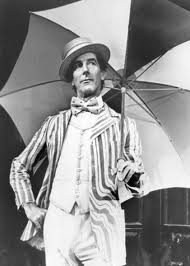

















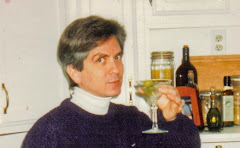
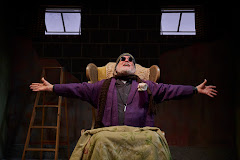




























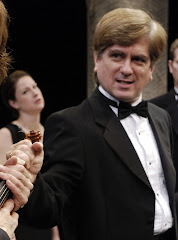
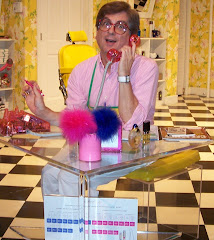
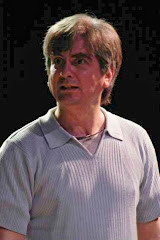
,+Olney+Theatre+Center,+2004.jpg)


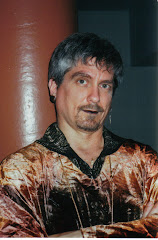
,+Shakespeare+Theatre+Company,.jpg)
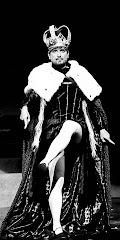

,+Warehouse+Theatre,+1999.jpg)
,+Are.jpg)
,+Everyman+Theatre,2002.jpg)
,+First+Nationa.jpg)
,+Shakespeare+Theatre+Company,.jpg)


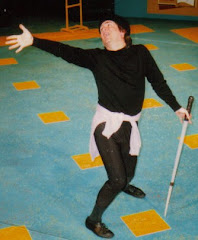
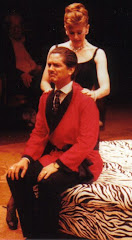
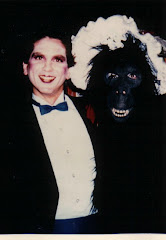
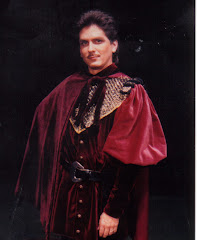
,+Granada+Th.jpg)
,+Globe+Playhouse,.jpg)
,+CSUN,+1976.jpg)
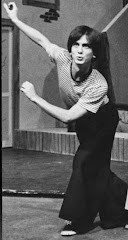


No comments:
Post a Comment